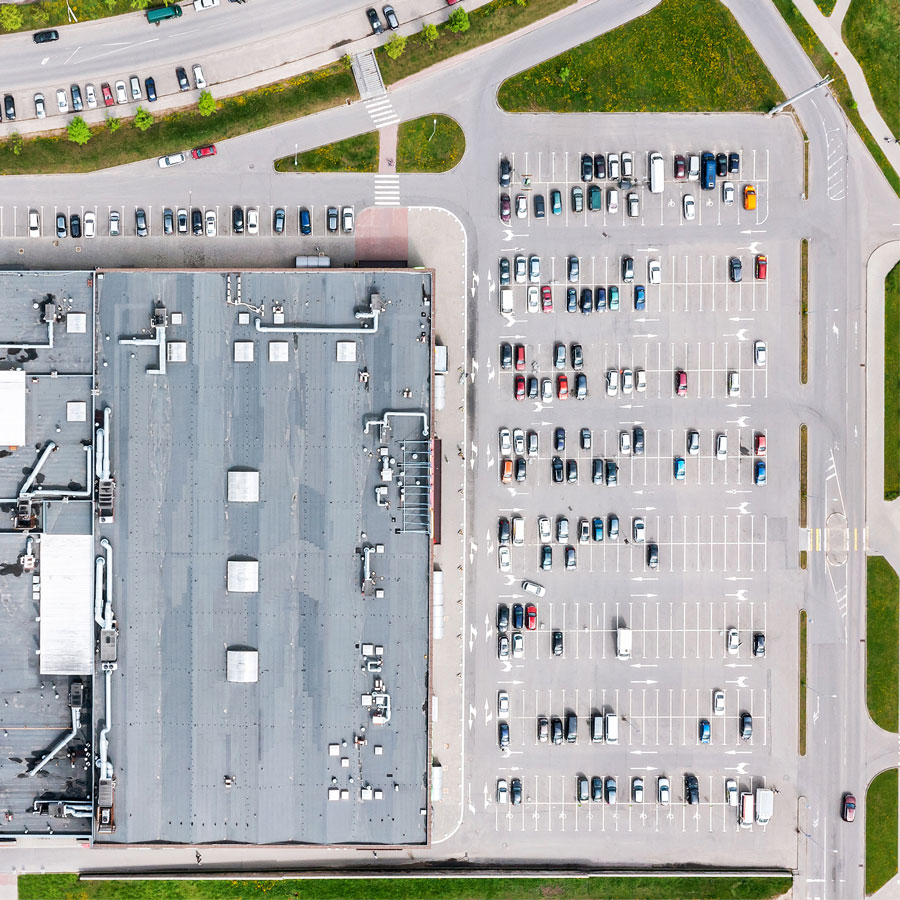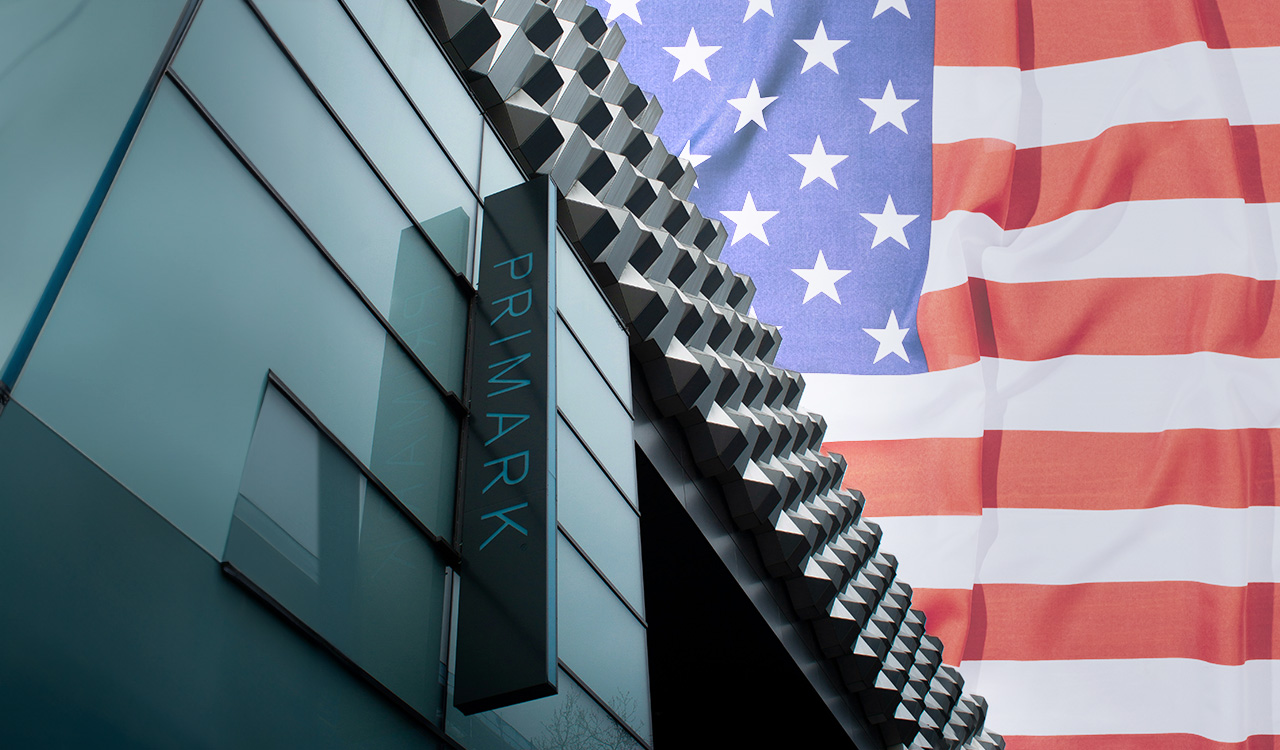This might come as a surprise to New Yorkers who are constantly on the prowl for a choice parking spot – an aspect of Big Apple life that, at times, can even turn bloody and violent – but the truth of the matter is that for vast swathes of the country, there is simply too much parking.
Vacant Space
Although some of us might cringe at the idea of trying to find a parking spot at the supermarket the day before Thanksgiving, at Best Buy on Black Friday, or at the mall on Christmas Eve Day, these instances are the exception rather than the rule. Aside from a few of these special outlier occasions each year, the truth is that most parking spots at major urban, suburban, and ex-urban retail locations are grossly underutilized. At the outer rim of many parking lots sit paved-over spots that rarely see any action – and Big Box retailers are beginning to take notice and think, literally, out of the box, about how to better use this idle real estate.
What is behind this glut of parking availability traces back to a mosaic of factors, but the “too much unused parking space” phenomenon is not unique to retail. An untold number of unused parking spots sit idle at residential complexes across the country and in major cities, many downtown garages sit nearly empty. Not only is all this needlessly paved-over land bad for the environment (asphalt traps heats and releases harmful pollutants into the environment), but it can also present a security threat (the notion of an “empty parking garage at night” almost immediately conjures up the idea of imminent danger); moreover, remote sections of parking lots seem to be among criminals’ favorite places for buying and selling contraband.
Car Culture
The surfeit of parking spots stems from our country’s nearly 100-year love affair with the automobile which translated, mainly in the 1950s, 60s and 70s, into local municipalities whipping up an array of arcane zoning codes that mandated minimum parking requirements for many types of real estate projects – all of which came at a time during the emergence and growth in popularity of the neighborhood mall and the first Big Box retail complexes.
Of course, beginning in the late 1990s, with the rise of ecommerce, fewer and fewer people needed to venture out to retail establishments as often as they had to in the past. Fast-forwarding to the 2020s, the rise in popularity of ride-sharing services like Uber and Lyft only contributed to the same trend. But perhaps the biggest vector of change has been the move to remote work, which really accelerated during the pandemic. According to Donald Shoup, an urban planner at the University of California, Los Angeles who is a specialist in parking research (yes, such a field does exist!), there are as many as 2 billion parking spaces in the U.S. or seven spots for every registered vehicle. (Although why someone still inevitably parks right next to me each and every time I venture out in my vintage 1988 Rubinrot Mercedes 560SL coupe even though I purposely search for the most remote and inconvenient location possible on the lot so no one inadvertently swings their door into mine is still one of life’s great unsolved mysteries, but I digress…)
Big Lots
Fortunately, across the country, buoyed in part by local regulations which are easing or even eliminating minimum parking requirements, massive parking lot installations at major retail locations are getting a fresh look – some may even call it an urban blight makeover, which is why many retailers are bidding adieu to the days of endless rows of empty spaces and hello to a more creative use of that precious land.
According to the Sightline Institute, a champion of sustainable development in the Pacific Northwest, retail giants like Walmart have long realized that many of their locations overbuilt their parking facilities and are leading the charge in reimagining how to utilize the land in novel ways.
Take the colossal Walmart in Wood Village, Oregon, for example. It’s been on a mission to downsize its parking lot since the early 2000s. Even after a 45 percent expansion of the store, the management team managed to reduce the number of spaces by 36 percent. In the past couple of years, the store has reduced its parking spaces by a third from 1,200 spaces to 800. With all the extra space, the store has converted part of the erstwhile parking area into a dry port for container storage.
But Walmart is not alone. Macy’s, financially struggling from a downturn in foot traffic, unveiled a plan in 2017 to sell off parcels of extra parking and direct that cash back into its online market. “The fact of the matter is we don’t need the massive parking lots that we needed in the 1970s,” Doug Sessler, the head of Macy’s real estate division told analysts during an industry meeting at the time. Lowe’s, for example, has also looked to lease the space out to complementary businesses like carwashes, fast food, and other services that will attract customers to the area.
Repurpose, Reposition
With that in mind, here are five ways many malls and Box Retailers are making use of or at least thinking about what to do with all those unnecessary parking spaces:
1. Complementary Retail.
Retailers have been leasing or selling land previously dedicated to parking spots to stand-alone complementary retail operators. Of course, the gas station at the opposite corner of the retail complex has been a staple of retail operations for some time, but increasingly, retail operators are becoming bolder and more imaginative in what to do with this land. Oftentimes Target has sold the unneeded land to a developer that can put in drive-through coffee or fast food. They have even turned it into a mini strip mall that gets customers into the vicinity and, hopefully, thinking about items they may need that are literally just a few yards away. And with Starbucks planning on opening 2,000 new stores over the next three years, we can expect to see a lot more of this trend.
2. Community Green Spaces.
The idea of turning part of an underutilized parking lot into, well, a good-old fashioned park is an idea that is catching on. Not only does it bring families into the vicinity and make that Costco or Kroger run much more appealing, but it also makes the entire area much more inviting. Recently, the San Diego City Council voted to turn the unsightly South Palisades parking lot into a pedestrian-friendly plaza area and green space.
3. Temporary Uses.
Picture this: a drive-in movie theater on the same parcel of land where you park your car. Many retailers, stadiums, and other venues with large parking lots that go mostly unused are connecting with their local communities by sponsoring pop-up, 1950s-style drive-in movies. For example, last summer, in York, Pennsylvania, the renowned Pullo Family Performing Arts Center decided to turn its pavement into an open-air venue for screening “Top Gun Maverick.” Using the space to host summer basketball leagues or concert venues is also becoming much more common, which has led to “Parking Lot Programming” positions at many large malls and retailers.
4. Expansion.
Of course, many retail operators have used idle parking areas to expand their businesses if the economics warrant such a move. The Mall of America in Bloomington, Minnesota, recently announced that it was building out a 320,000-square-foot water park, to be called “Mystery Cove.” Where Canadian Triple Five, the group that owns and operates the MOA, got the land was not a mystery at all: working with the city, it was able to reclaim seldom-used parking lots and an adjacent undeveloped parcel of land.
5. Return to Mother Nature.
In 2022, Nature, the esteemed scientific journal, published an urban sustainability paper entitled “Finding space for nature in cities: the considerable potential of redundant car parking.” It examined the multiple benefits of simply devolving idle parking areas back to nature. From addressing global warming and climate change to mitigating floods and improving overall community mental health, there is logic to creating more accessible nature preserves. The article argued that unused urban parking spaces might hold the key to improving urban quality of life indices in America’s inner cities. Accelerating these types of efforts seems to be in line with what Mother Nature is already signaling to us. Take for example the famous “Lake Chipotle” – a major body of water that appears during the spring snow melt in the parking lot of a Chipotle located in the East Isles neighborhood of Minneapolis. Locals, whose city is nicknamed “City of Lakes,” were quick to christen the slush pond-cum-parking lot with the name of the Tex-Mex fast-food purveyor that it serves. You have to openly wonder if Mother Nature just wants the land back so badly, maybe Chipotle should just indulge her.
Of course, almost all these decisions about what to do with idle parking spaces are based on economics. Fortunately, local governments and communities are increasingly open to partnering with retailers to envision how multiple stakeholders might come together to create the right mix of incentives and benefits to push along this transformation.




